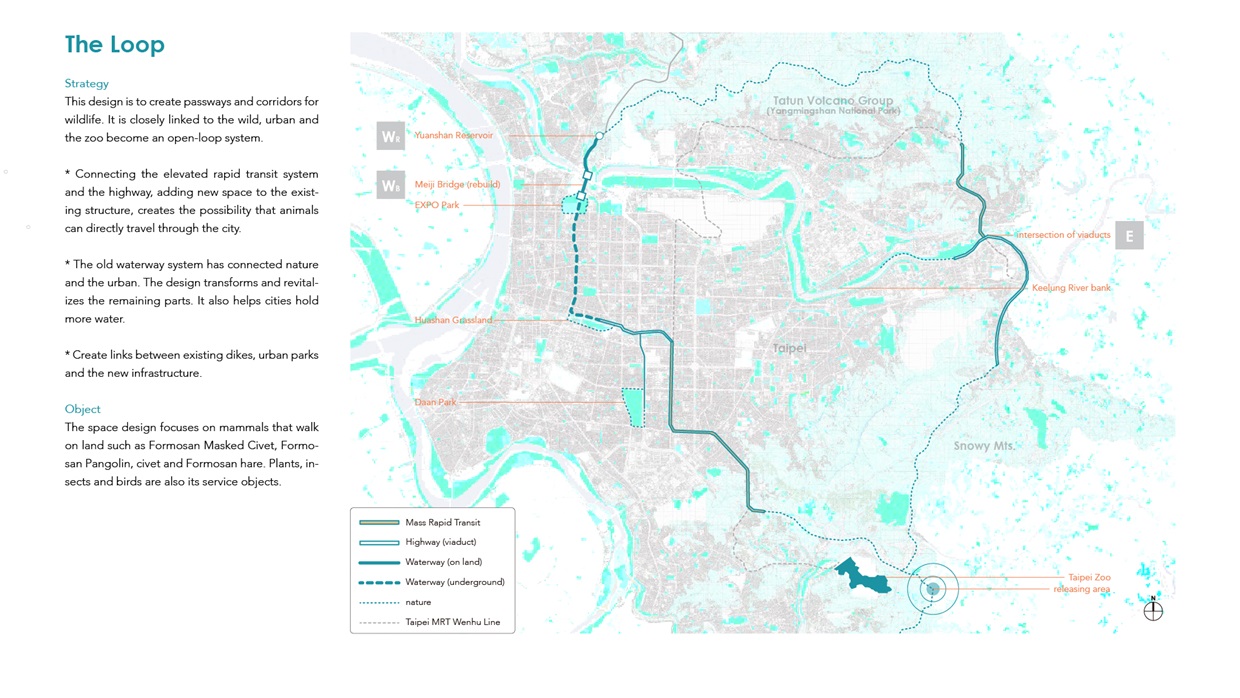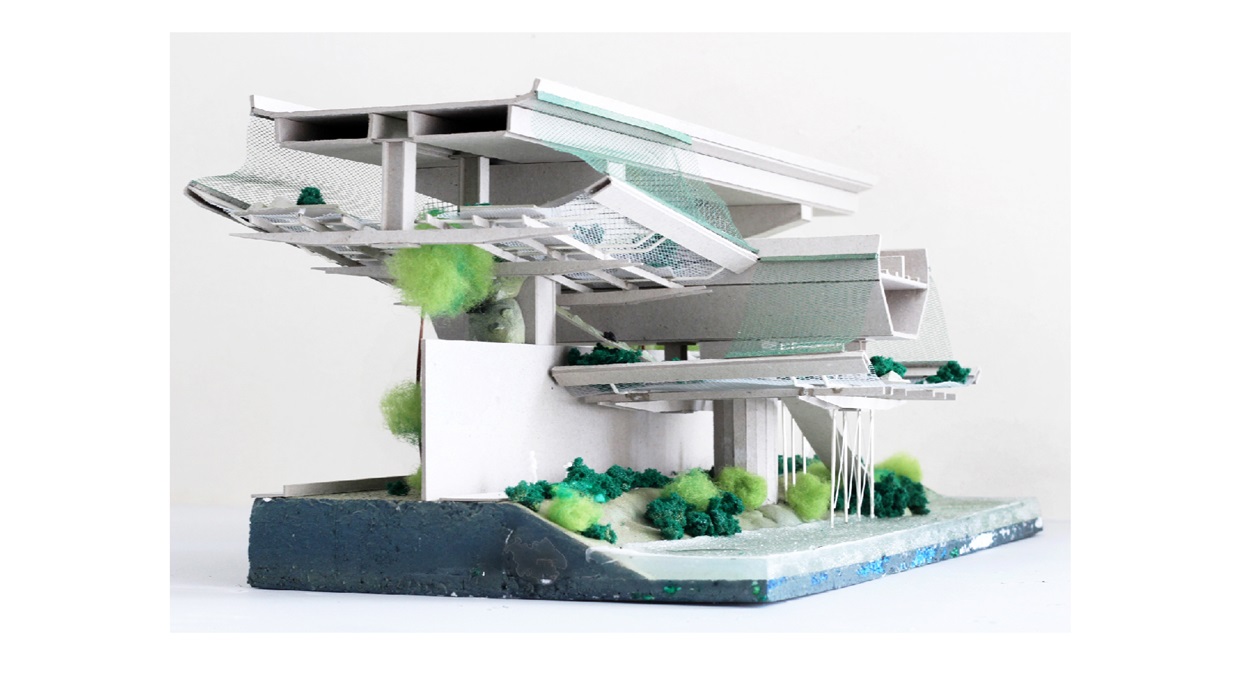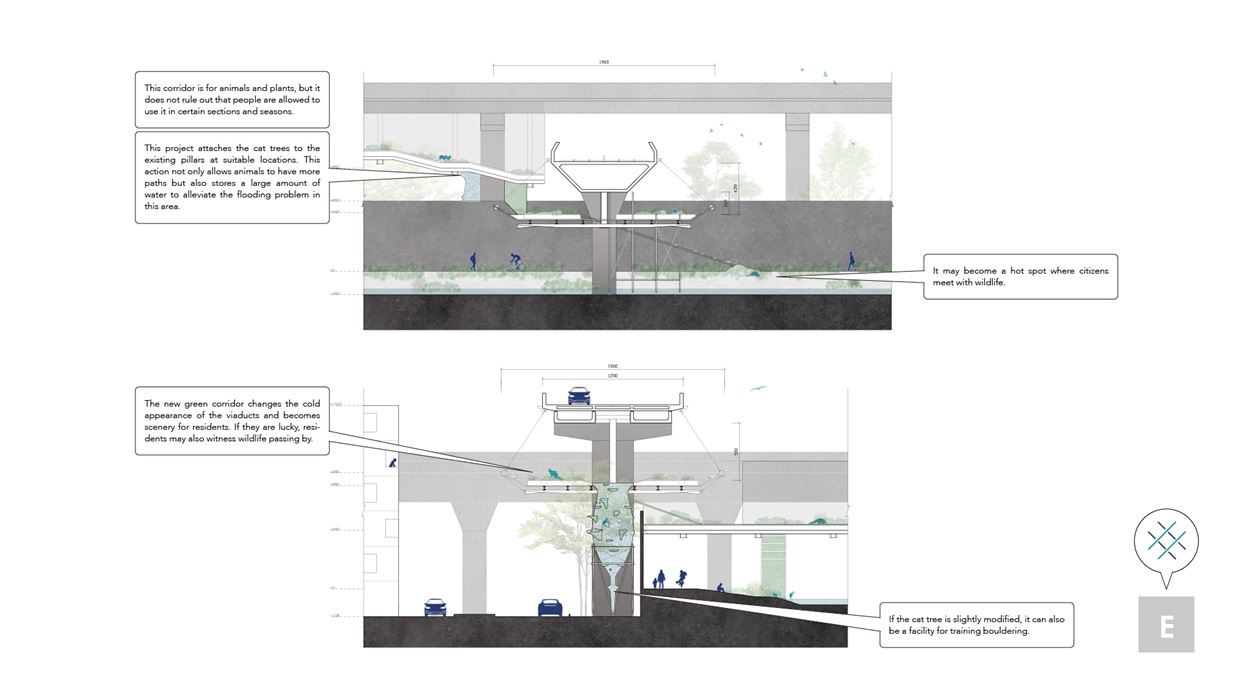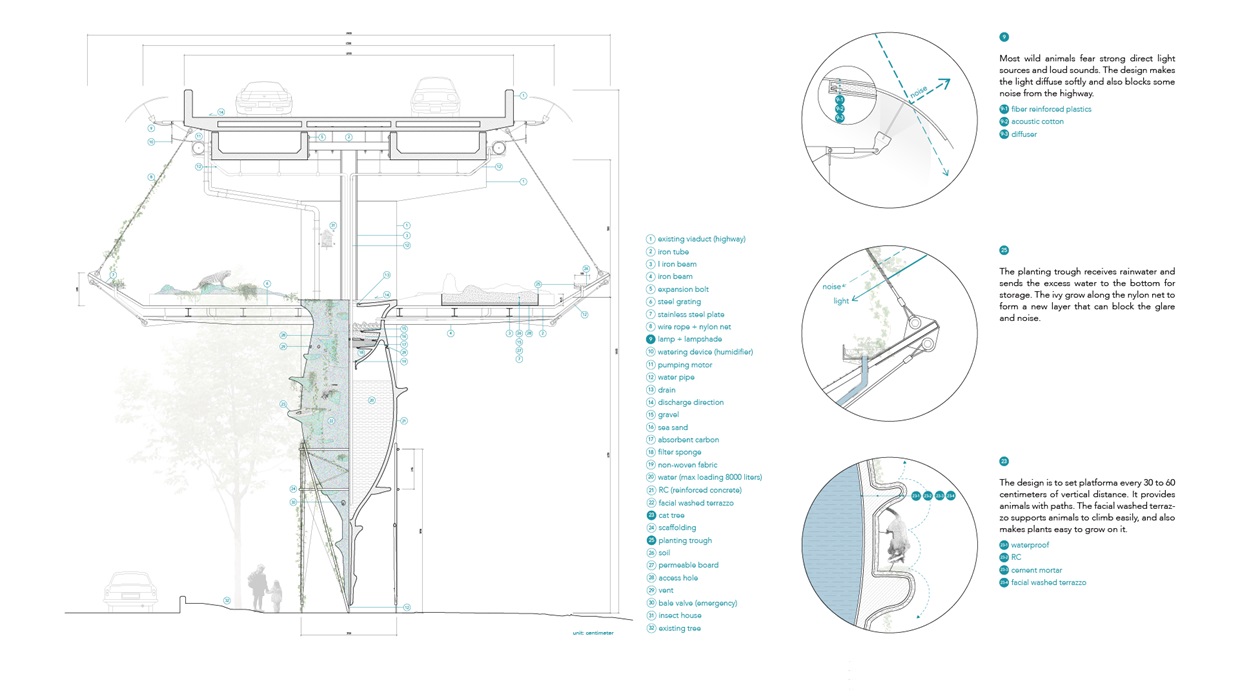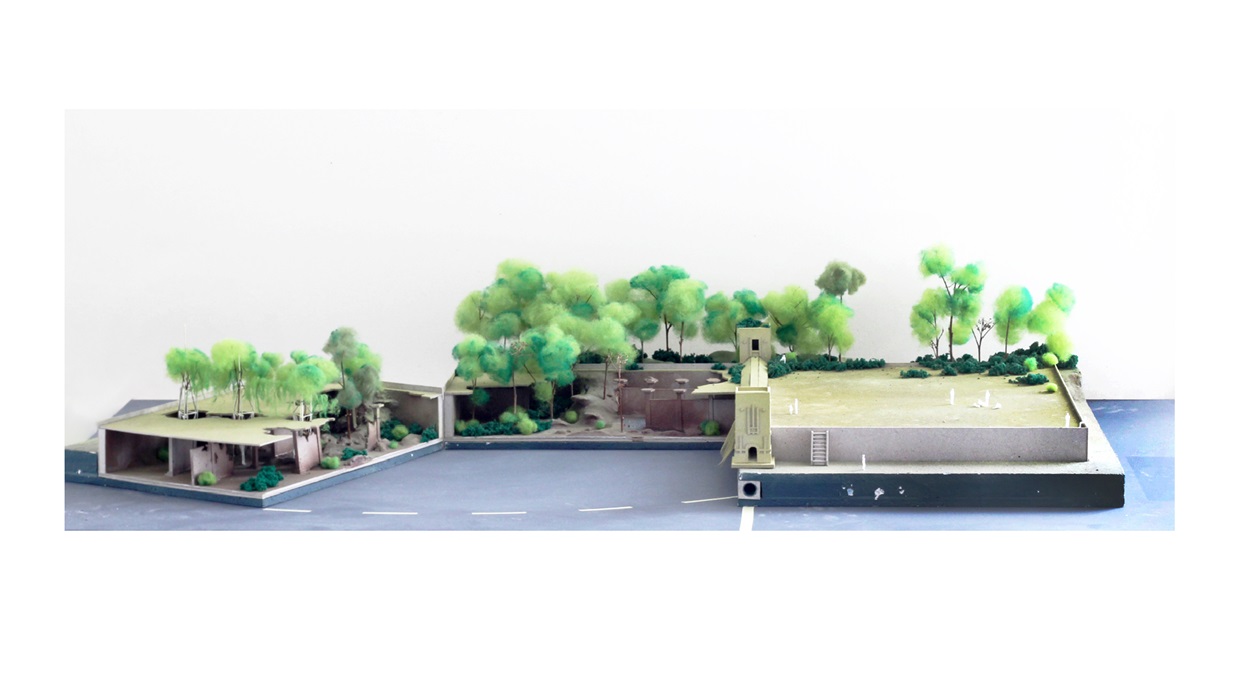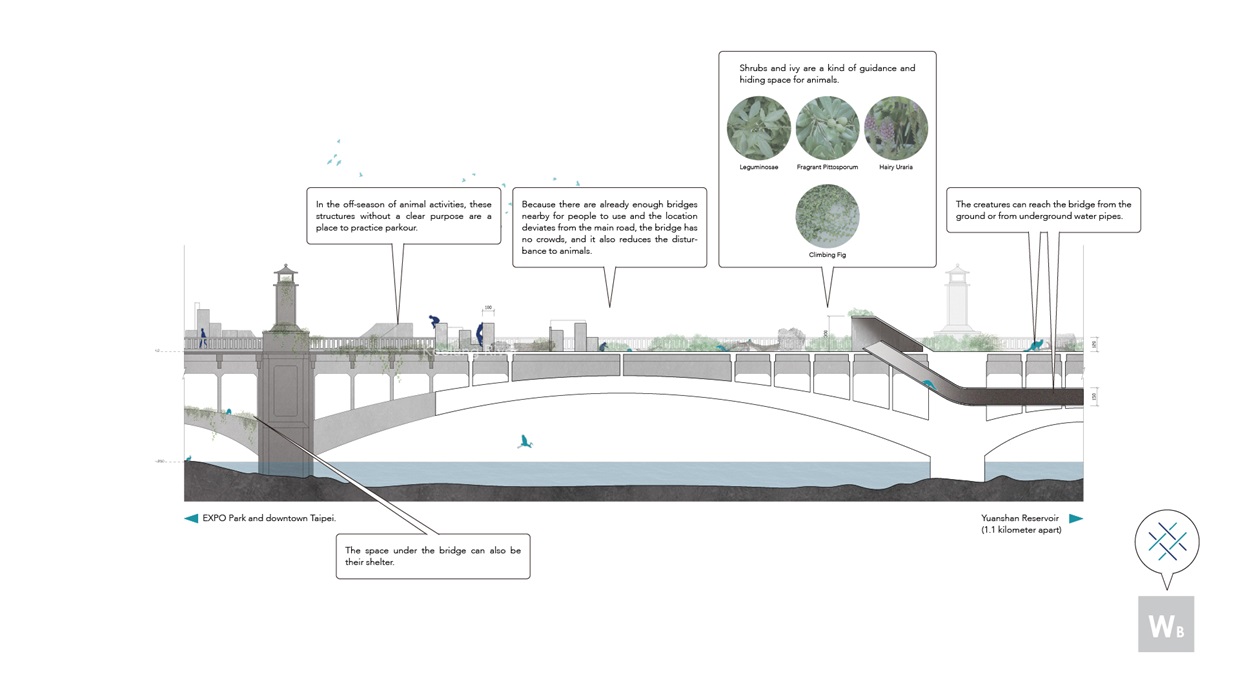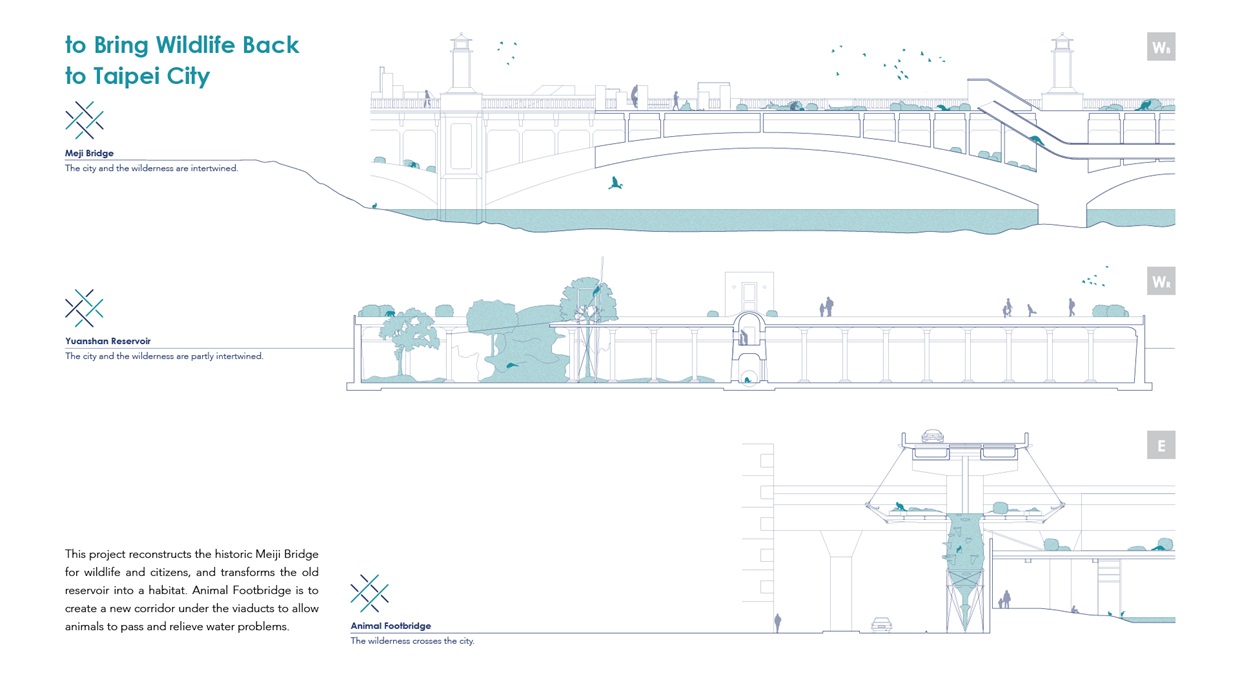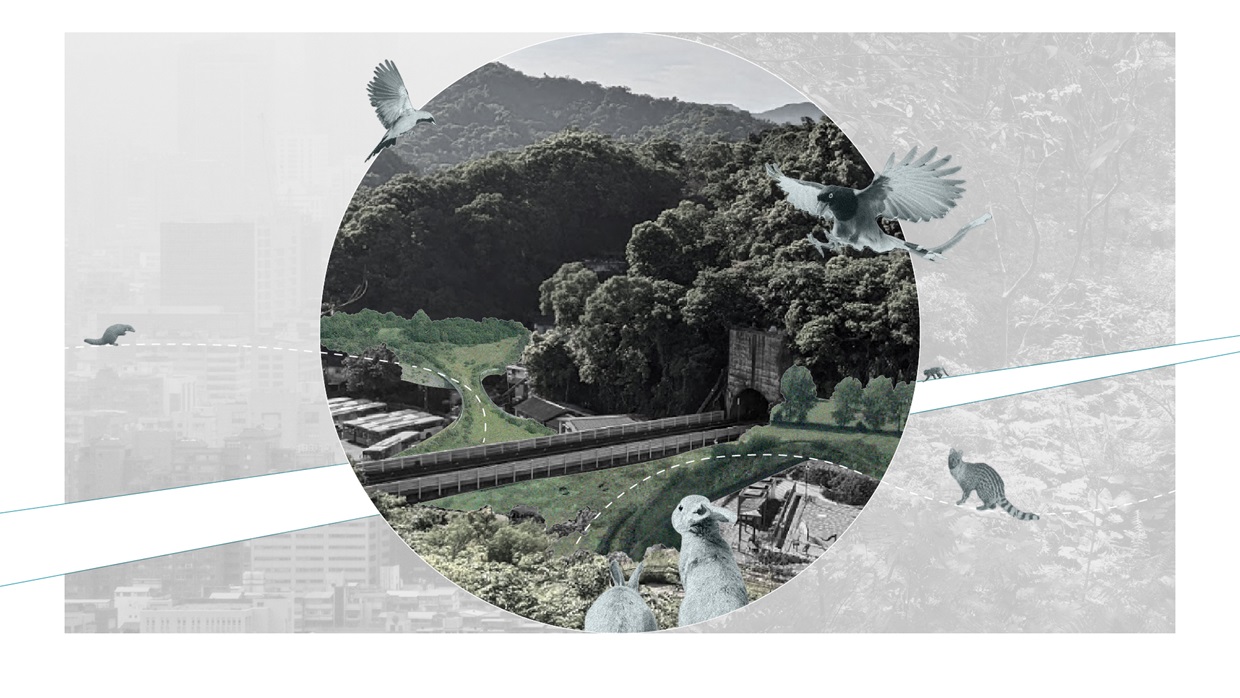
WHAT
In my imagination, the zoo may be a city with biodiversity and frequent encounters with different species. However, the wild city can reconnect an increasingly urbanized public with the natural world.
WHY
Cities keep expanding outwards, taking more land for human use and away from other species. This situation has caused animal species to lose their habitats, lack resources and become endangered. Furthermore, the living areas of some species overlap with cities, but cities rarely consider their needs. When certain species have a need to move for food and mating, they can only bypass huge cities or risk crossing them.
WHERE
Cities in Taiwan are dense and rapidly expanding to the surrounding area. The natural environment had been relatively unimportant to the citizens for a long time. Nevertheless, the periphery of the high-density city still maintains a high degree of biodiversity, and the citizens’ environmental awareness has gradually increased
HOW
The ways for connect city, wilderness and existing zoo by create a loop.
- Connect existing rivers, pond, parks, green spaces and even street trees
- transform viaduct, bridge and underground waterway system for wildlife
- place more man-made nature in the city (ruins, open space)
In order to increase feasibility, there must be more strategies
- act with three main animal groups: insect, bird and mammal
- mix two types space(passageway and corridor) into the system
- make different levels of interaction between the animals and human
Other design methods can be applied to this case.
- speculative design
- parkour

